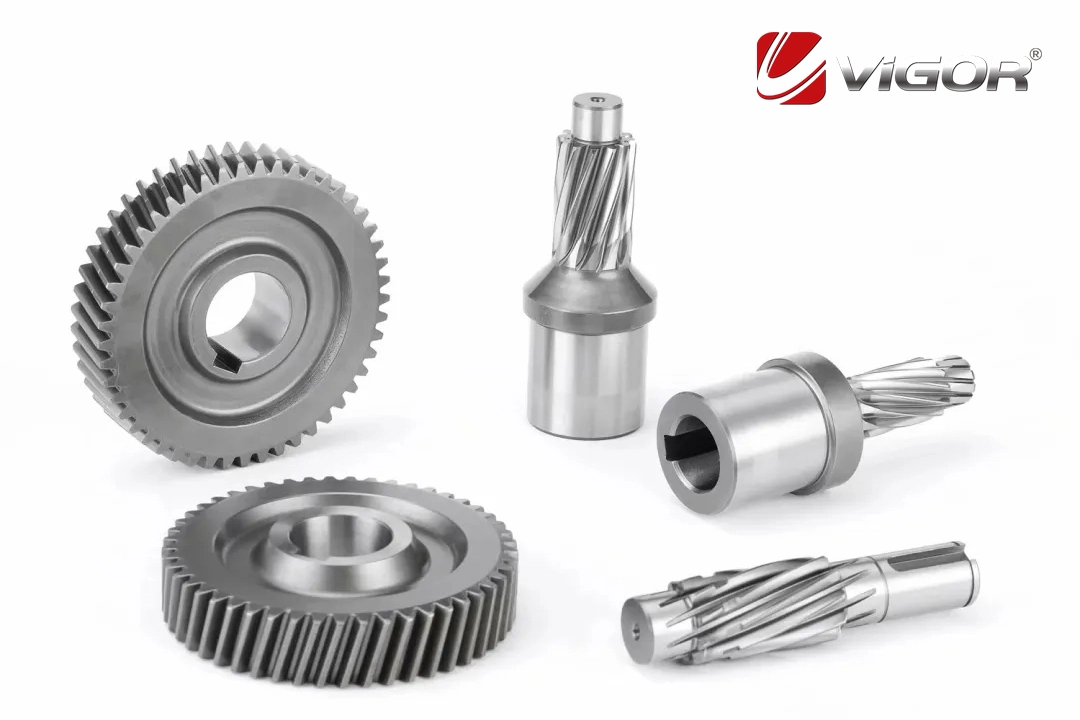
Knowledge
The Basic Theories and Methods of Gear Design

The basic theories and methods of gear design mainly revolve around the geometric characteristics, mechanical properties, contact analysis, and lubrication conditions of gears. The following is a summary of the basic theories and methods of gear design based on the information I have gathered:
1. Geometric Design
The geometric design of gears is the foundation of their design, mainly including the determination of parameters such as module, number of teeth, pressure angle, and tooth profile. The module is the core parameter in gear design, which determines the size and strength of the gear. The involute tooth profile is commonly used to ensure the meshing performance and smooth transmission of gears. Additionally, the number of teeth should be relatively prime to avoid uneven wear caused by specific tooth combinations.
2. Mechanical Design
Gear design needs to consider the strength and stiffness of gears. Common strength calculation methods include tooth surface strength calculation and tooth root strength calculation. Tooth surface strength calculation mainly considers the stress distribution during gear contact, while tooth root strength calculation focuses on the stress concentration at the tooth root. Moreover, gear design must also take into account dynamic loads and fatigue life to ensure the reliability of gears during long-term operation.
3. Contact Analysis
Contact analysis of gears is a key step in the design process, involving the stress distribution, contact area, and contact pressure during gear contact. The traditional Hertz contact theory is used to analyze the stress distribution during gear contact, but it may not be applicable under high-speed and heavy-load conditions. Therefore, non-Hertz contact theories have been proposed to more accurately simulate the actual contact state.
4. Lubrication Design
Lubrication design is crucial for reducing friction and wear in gears. Elastohydrodynamic lubrication theory is widely used in the design of high-speed and heavy-load gears to ensure that a sufficient oil film is formed during operation, preventing direct metal contact. Lubrication design not only considers the strength of gears but also must meet lubrication requirements to improve the lifespan and reliability of gears.
5. Design Methods
The methods of gear design mainly include empirical design, mechanical design, and numerical simulation. Empirical design is based on the experience of engineers and reference manuals and is suitable for simple designs. Mechanical design is based on mechanical principles and is suitable for precise designs. Numerical simulation uses computer software for simulation analysis and optimization design to improve the accuracy and efficiency of the design.
6. Manufacturing and Processing
Gear design also needs to consider manufacturing processes and processing methods. Common gear processing methods include milling, hobbing, and broaching. Among them, hobbing is currently the most commonly used method, which can efficiently produce high-quality gears through hobbing machines. Additionally, gear manufacturing also needs to consider material selection, heat treatment, and surface treatment to improve the wear resistance and fatigue resistance of gears.
7. Optimization and Verification
The ultimate goal of gear design is to optimize the performance and manufacturing cost of gears. During the design process, parameter optimization, such as module, number of teeth, and tooth width, is required to minimize manufacturing costs while meeting strength and lubrication requirements. Moreover, the design results need to be verified through experiments and actual tests to ensure their reliability in practical applications.
Gear design is a comprehensive engineering process that requires the integration of knowledge from geometry, mechanics, materials, and manufacturing to ensure the performance and reliability of gears in practical applications.
Vigor team has more than 20 years of experience in die forged gear and gear shaft production, machining, different treatments, and delivery. If you have any questions or parts that need to be developed, please feel free to contact us at info@castings-forging.com



